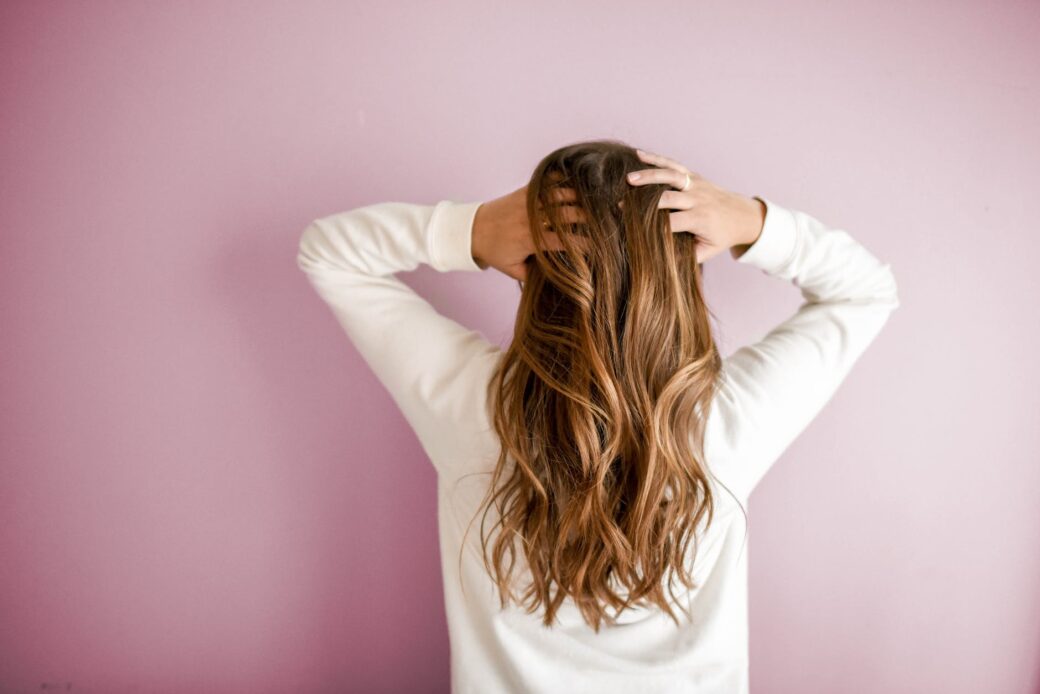Hair is an essential aspect of a woman’s beauty and confidence. A healthy and well-maintained mane not only enhances her overall appearance but also boosts her self-esteem. Hair masks are a popular and effective way to nourish and rejuvenate hair. In this blog, we will delve into the world of hair masks, their benefits, types, and how to make some of the most effective DIY hair masks at home.
Benefits of Hair Masks:
- Deep Conditioning: Hair masks provide deep conditioning, which helps to restore moisture and nourishment to your hair. This, in turn, prevents breakage and makes your hair more manageable.
- Repairing Damage: Hair masks are known to repair damaged hair caused by heat styling, chemical treatments, and environmental factors. They help in strengthening hair strands and reducing split ends.
- Promoting Hair Growth: Hair masks can promote hair growth by providing essential nutrients to the scalp and hair follicles.
- Enhancing Hair Texture: Regular use of hair masks can improve hair texture, making it softer, shinier, and more vibrant.
Types of Hair Masks:
- Moisturizing Hair Masks: These masks are designed to hydrate and moisturize dry, damaged, or frizzy hair. They typically contain ingredients like shea butter, coconut oil, and avocado oil.
- Protein Hair Masks: Protein-based hair masks are perfect for strengthening weak or damaged hair. They contain ingredients such as keratin, collagen, and silk proteins.
- Detoxifying Hair Masks: Detoxifying hair masks help remove product buildup, excess oil, and impurities from the hair and scalp. They often contain ingredients like activated charcoal, bentonite clay, and apple cider vinegar.
- Scalp Treatment Hair Masks: These masks focus on improving scalp health and promoting hair growth. They may contain ingredients like tea tree oil, peppermint oil, or rosemary oil.
DIY Hair Mask Recipes:
- Moisturizing Avocado Hair Mask
- 1 ripe avocado
- 2 tbsp olive oil
- 2 tbsp honey
Mash the avocado, and mix in the olive oil and honey. Apply the mixture to damp hair and let it sit for 20-30 minutes before washing it out with shampoo.
- Protein-Packed Egg Hair Mask
- 1 egg
- 1 tbsp coconut oil
- 1 tbsp honey
Beat the egg and mix in the coconut oil and honey. Apply the mixture to damp hair and let it sit for 20-30 minutes before washing it out with shampoo.
- Detoxifying Charcoal Hair Mask
- 1 tbsp activated charcoal powder
- 2 tbsp bentonite clay
- 1 tbsp apple cider vinegar
Mix the charcoal, clay, and apple cider vinegar to form a smooth paste. Apply the mixture to damp hair and let it sit for 10-15 minutes before washing it out with shampoo.
- Soothing Scalp Treatment Hair Mask
- 2 tbsp coconut oil
- 5 drops tea tree oil
- 5 drops peppermint oil
Mix the coconut oil and essential oils. Apply the mixture to your scalp and massage gently. Let it sit for 20-30 minutes before washing it out with shampoo.
FAQs:
- How often should I use a hair mask?
- For most hair types, using a hair mask once a week is sufficient. However, if your hair is particularly damaged or dry, you may benefit from using a mask twice a week.
- Can I leave a hair mask on overnight?
- While some hair masks can be left on overnight for extra conditioning, it’s best to follow the instructions on the product or recipe. In general, leaving a mask on for 20-30 minutes is enough to provide the desired benefits. If you decide to leave a mask on overnight, make sure to protect your pillow with a towel or wear a shower cap.
- Can I use a hair mask on my scalp?
- It depends on the type of hair mask. Scalp treatment hair masks are specifically designed for the scalp, while other types of masks may be too heavy or rich for the scalp and can cause buildup. Always read the instructions or check the ingredients before applying a mask to your scalp.
- Can I apply a hair mask on dry hair?
- Hair masks are generally more effective when applied to damp hair, as this allows the mask to penetrate the hair shaft more easily. However, some masks can be applied to dry hair, especially those intended for detangling or managing frizz.
- How do I choose the right hair mask for my hair type?
- It’s essential to understand your hair’s needs and choose a mask that addresses those specific concerns. For example, if your hair is dry and damaged, opt for a moisturizing hair mask. If your hair is weak and prone to breakage, choose a protein-based hair mask.
- Can I use hair masks if I have colored hair?
- Yes, hair masks can be used on colored hair. In fact, some masks are specifically designed to maintain and enhance color-treated hair. However, always read the label or check the ingredients to ensure they are safe for your specific hair color.
- Can I use a hair mask before shampooing?
- Yes, you can apply a hair mask before shampooing. In fact, some masks work better when applied to hair before washing, as the shampoo will help to remove any residue left behind by the mask.
- Can I mix different hair masks together?
- While it may be tempting to mix different hair masks to address multiple hair concerns, it is generally not recommended. Mixing masks can lead to unpredictable results or even counteract the benefits of each mask. Instead, alternate between different masks or focus on your most pressing hair concern.
- Is it necessary to use a conditioner after using a hair mask?
- It depends on the hair mask and your hair type. If you’ve used a deeply moisturizing or protein-based hair mask, you might find that your hair is already adequately conditioned and doesn’t require additional conditioner. However, if your hair still feels dry or tangled after using a hair mask, it’s a good idea to follow up with a conditioner.
- Are hair masks suitable for all hair types?
- Yes, hair masks can be used on all hair types. However, it’s essential to choose a mask that is specifically formulated for your hair type and concerns. For example, curly or coily hair may require more moisture, while fine hair may need a lighter formula that won’t weigh it down.
- How long should I wait after coloring my hair to use a hair mask?
- It’s best to wait at least 48-72 hours after coloring your hair to use a hair mask, as this allows the color to settle and reduces the risk of color fading or altering. After this period, you can use a color-safe hair mask to help maintain your hair’s vibrancy and health.
- Can I use a hair mask if I have dandruff or an itchy scalp?
- Yes, but it’s important to choose a hair mask that specifically addresses these issues. Look for a scalp treatment hair mask with ingredients like tea tree oil or peppermint oil, which can help alleviate dandruff and soothe an itchy scalp. Additionally, make sure to avoid hair masks that are too heavy or rich, as these can exacerbate scalp problems.
Conclusion:
Hair masks are a powerful tool in maintaining and improving the health and appearance of your hair. By understanding the different types of hair masks and how they can benefit your specific hair type, you can tailor your hair care routine to achieve the best results. Don’t hesitate to experiment with DIY hair mask recipes, as they can provide cost-effective and natural alternatives to store-bought masks. Regularly treating your hair with a mask can lead to softer, shinier, and healthier hair in the long run.








